Every couple of months, someone proclaims that SEO is dead or sets off a number of anti-SEO threads, based on the continuous changing scenery in the search industry. It goes without saying that the landscape is different from what it used to be a couple of years before but from “different” to “inexistent” there is a wide range of tones.
One might say: “Nothing has really changed. It’s simple: focus on your visitors and pretend Google doesn’t exist!” That is indeed a very good piece of advice but Google does exist and, at the end of the day, it is its yard we are playing in.
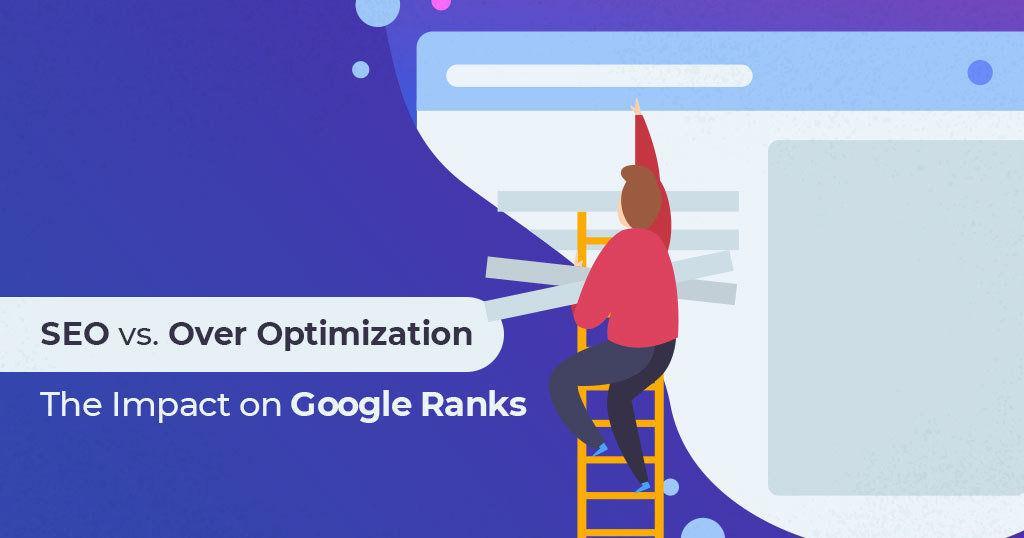
It goes without saying that SEO has a range of colors and sizes that everybody is trying to guess. Lots of websites use all sorts of SEO techniques and lately, we’ve seen a new approach – the “unoptimized” SEO technique. What it is and how it affects the web you’ll get from today’s article.
- Google’s Opinion on Website Optimization
- Search Engine Optimization vs. Over Optimization
- How to Approach Unoptimized SEO
- Strategic Growth Strategies for Unoptimized Web Pages
1. Google’s Opinion on Website Optimization
Undoubtedly, the search industry has changed a lot lately and SEO was forced to constantly adapt to these never-ending changes.
Techniques that used to be SEO’s no.1 weapons now seem rudimentary and wasteful.
If, back in 2009, Matt Cutts said that “there is no such thing as Google over-optimization penalty“, in 2012 the same Matt Cutts was telling us that all those who had been doing over-optimization or overly doing their SEO compared to the webmasters could be the subject of a penalty. Google always worked on making their bot smarter, and their relevance criteria more adaptive.
In short, Google’s message is pretty clear: Optimize too much and you will get penalized. Yet this statement has raised so many questions all these years. Lots of SEOs have been using this terminology for a long time for websites that don’t do well in the Google search results because they do too much SEO. Some call it the over optimization penalty. Google’s Gary Illyes confirmed that over optimization exists and can hurt your rankings.
That is totally a thing, but I can’t think of a better name for it. It is literally optimizing so much that eventually it starts hurting.
— Gary “鯨理” Illyes (@methode) May 24, 2017
2. Search Engine Optimization vs. Over Optimization
Once again Matt Cutts tries to answer this question (or rather raises even more questions). In Google’s opinion, keyword stuffing, too many links exchanges or too many SEO improvements begin to ruin the website’s ability to rank and thereby, penalize it.
Although nowadays optimization requires an integrated approach, SEO was traditionally divided into two main areas:
- on-page optimization – covering the actions that can be done on the pages of the website itself, factors that are controlled by you or by coding on your page. Examples of on-page optimization include actual HTML codes, meta tags, keyword placement or keyword density.
- off-page optimization – covering the activity that is off-site and is not controlled by you. Examples of off-page optimization include things such as link building, link popularity or link authority.
When it comes to optimization, Google says NO to off-page optimization and YES to on-page optimization. By this, Google is telling us that one should not try to alter the rankings by manipulating the external metrics of the site. If you’re using on-page, you are free to do anything you can in order to grow your ranking organically; anything as long as it doesn’t imply excessive keyword repetition, duplicate content or any other black hat SEO technique.
On the other hand, over-optimization comes often times as an off-page technique, through link building and all sorts of linking schemes. That’s why it is not something Google agrees with.
That happens because the big search engine doesn’t like it when people are trying to alter its results. These manipulation attempts are “rewarded” with big penalties most of the time. Lots of sites, big and small, were penalized publicly to set an example. From famous banks to flower shops, from travel agencies to online clothing, they were all given a harsh lesson about the rules of the game.
The aim of all these measures is not to make the SEO industry disappear, but to redefine the SEO industry’s behavior.
In this new “unoptimized optimization” process it might be better for content marketers to focus more on strategic growth strategies and not on technical off-page SEO.
3. How to Approach Unoptimized SEO
Although it may sound like a paradox, “unoptimized optimization” is a reality we must cope with. In a recent AMA on Reddit, Gary Illyes recommends webmasters to go with the basics and focus on the on-site technicalities.
| I really wish SEOs went back to the basics (i.e. MAKE THAT DAMN SITE CRAWLABLE) instead of focusing on silly updates and made up terms by the rank trackers, and that they talked more with the developers of the website once done with the first part of this sentence. | |
| Gary Illyes | |
| Google Webmaster Trends Analyst | |
I am not here to tell you that you shouldn’t optimize your website. But I am saying that it is better to adapt to the actual SEO context rather than fight with the windmills. Optimization, in whatever form, shouldn’t distract you from the most important asset: visitors, customers, readers, etc. In the long run, they are the ones that matters the most. If you focus your actions on your audience, everything else falls in line behind that.
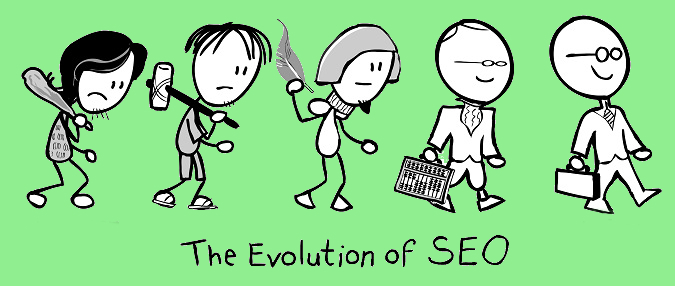
In the traditional SEO, success was measured according to the number of backlinks obtained or the authority of the pages that linked to a website. Unoptimized SEO changes the rules of the game, and therefore, the metrics for measuring success.
Search is the biggest game in town so the ace up in your sleeve should be on-site SEO. There are lots of things you could do in your yard before telling everybody that you have a party there. That means getting your website prepared before promoting it to get off-site benefits.
On site SEO is the “last mile” to strong search rankings.
Site Audit is the on-site tool that can help you keep track of your website’s performance and technical errors, at the highest level of detail. Practically, the tool flags ALL possible on-page SEO issues a site might have and provides recommendations on how to fix them. You can review information about:
- pages that are indexed by search engines or for some reason they are not indexed;
- duplicate content & meta tags;
- malware and unsecure content;
- social media issues;
- internal and external errors;
- broken links & resources;
- HTTPS implementation;
- canonical tags issues;
- sitemaps;
- AMP setups;
- page speed and website performance;
- & more.
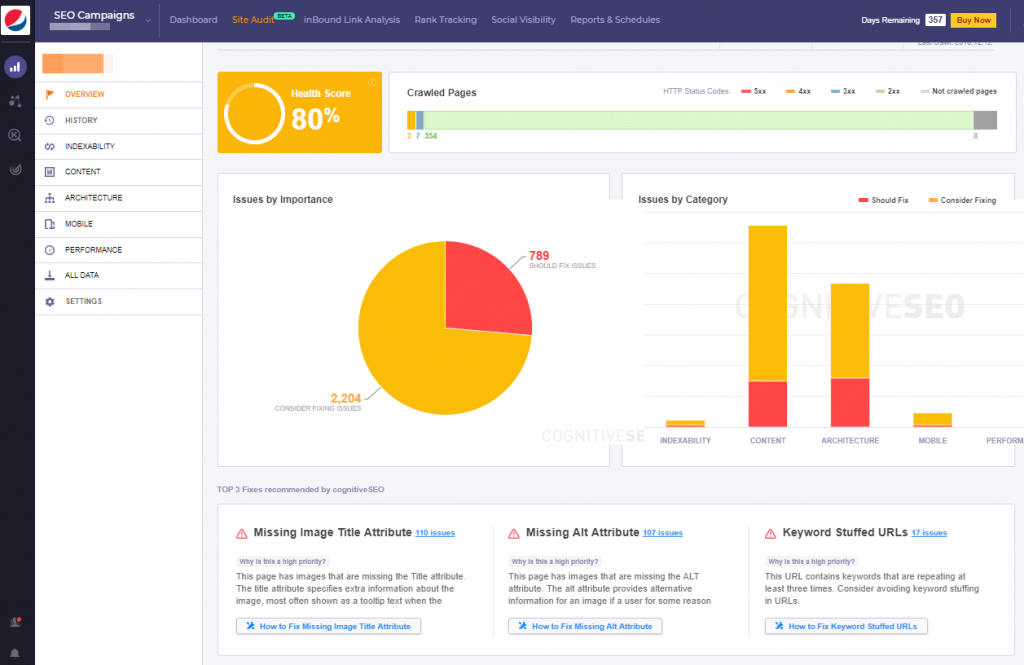
Using the Site Audit tool will definitely improve your website’s on-page SEO performance, and there are a lot of strategies you could follow.
4. Strategic Growth Strategies for Unoptimized Web Pages
4.1 Verify the Indexability of Your Pages
A webpage that is not indexed means it is not eligible to receive search engine traffic. The Site Audit gives information for such pages, classified in 8 categories:
- pages with the “Disallow” tag, which informs the search engines not to crawl this page;
- broken pages;
- pages that have duplicate content are placed in the Near Duplicates category;
- pages from the No-Index in Meta category that tells robots not to index the content of this page, and/or not to scan it for links to follow;
- redirected pages;
- pages that don’t have the canonical tag placed;
- pagination, applied mostly to e-commerce websites that divide the content into discrete pages, either electronic or printed pages;
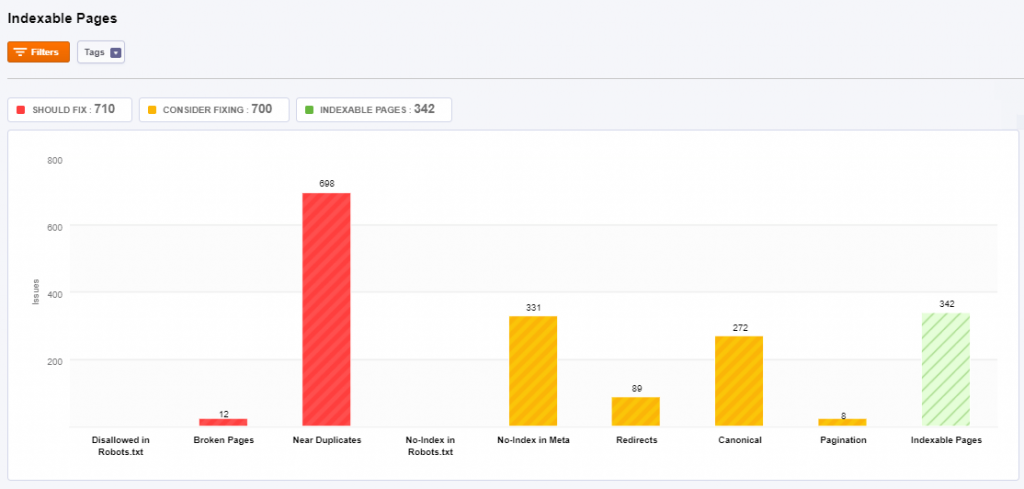
For a good website organization, you should allow the search engine to index only the important URLs so that these pages can rank high. In case you have any issues associated with your indexed pages, you need to fix those and decrease the issues that can harm your website.
4.2 Check Website for Duplicate Content
Another technique to improve your website is verifying duplicate content and meta tags (which includes titles, headings, descriptions). Duplicate content may negatively impact your search engine rankings, and create a poor user experience on the website because users will see almost the same content. Google encourages webmasters to create unique and relevant content for the visitors; that’s why you need to resolve the issue and rephrase the content that is repeated on your site.
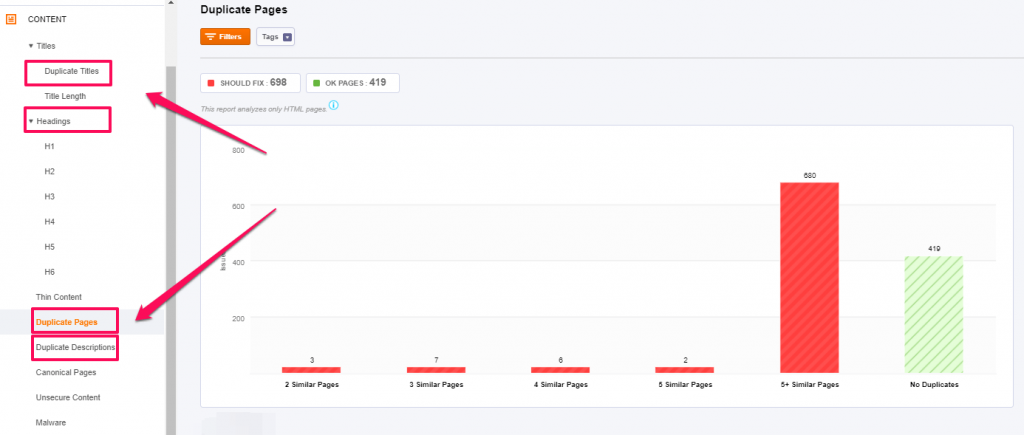
You have to establish your awesome content as the go-to resource by creating in-depth blog posts to attract the interest of the user. Evergreen content and case studies can be great examples of resources. For each blog post and page you have on your website, you’ll have to write different titles and unique meta descriptions. In case you have any issues regarding duplicates, use the Site Audit to easily discover the pages.
4.3 Implement Social Protocol Meta Tags
Social protocol meta tags help your content look proper when it’s shared on social media platforms. You know that every time a piece of content is shared, you can see a featured snippet like the screenshot below:
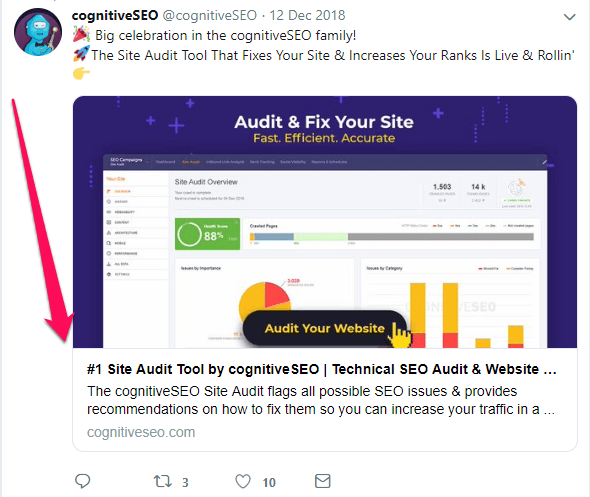
Site Audit can show you information about Facebook and Twitter protocols implementation because only these two platforms are still showing information about shares, likes, and other social metrics. For Social Media, the protocol is named Facebook Open Graph and for Twitter it’s Twitter cards. For example, if somebody shares your website content, Facebook will automatically extract a title, description, image and URL that it considers to be relevant for the shared page.
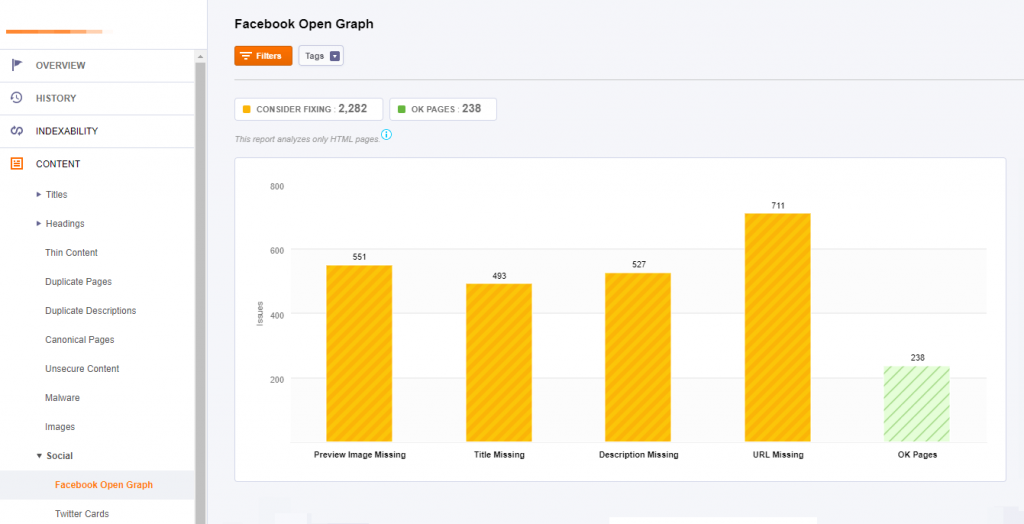
Having social protocols implemented on your website will make it easier for users to share it and see it properly in the social feed. The nice part of these protocols is the opportunity to customize and create actionable descriptions for every piece of article.
4.4 Correct Any Mistakes Associated to the Linking Structure
External and internal links can strength the authority of your site. It is important to have a well-structured architecture so that the user understands your website. Do you have pages with lots of internal links or too many external links? Then you need to find out what pages have those type of issues.
It is good to have pages with up to 100 internal links. On the same note, the number of external links must be kept under the same level, 100 links. At the opposite pole, pages with a small number of internal links should be checked, and if possible linked from a higher number of pages on your site, relevant pages.
Pages that don’t have any internal links pointing to them are placed in the orphan pages category, which means they don’t receive any traffic and search engines aren’t aware of their existence and don’t index them. If you want to be present in SERP, you’ll have to link the content to other pages from your site.
| Google relies on internal links to discover new content, this works because whenever you add a new page/post to your website it’ll almost always be linked-to from somewhere on your website. | |
| Matthew Woodward | |
| Award winning blogger matthewwoodward.co.uk | |
4.5 Fix any Broken Links and Resources
Broken links can negatively affect SEO as well as the user experience. Links that are broken will stop search engines from completely indexing your website. Imagine this: the user comes on your website from an external page and looks for some information. If the page is broken, it will show no valid information and give no directions to the user, then they’ll have a bad experience on the site.
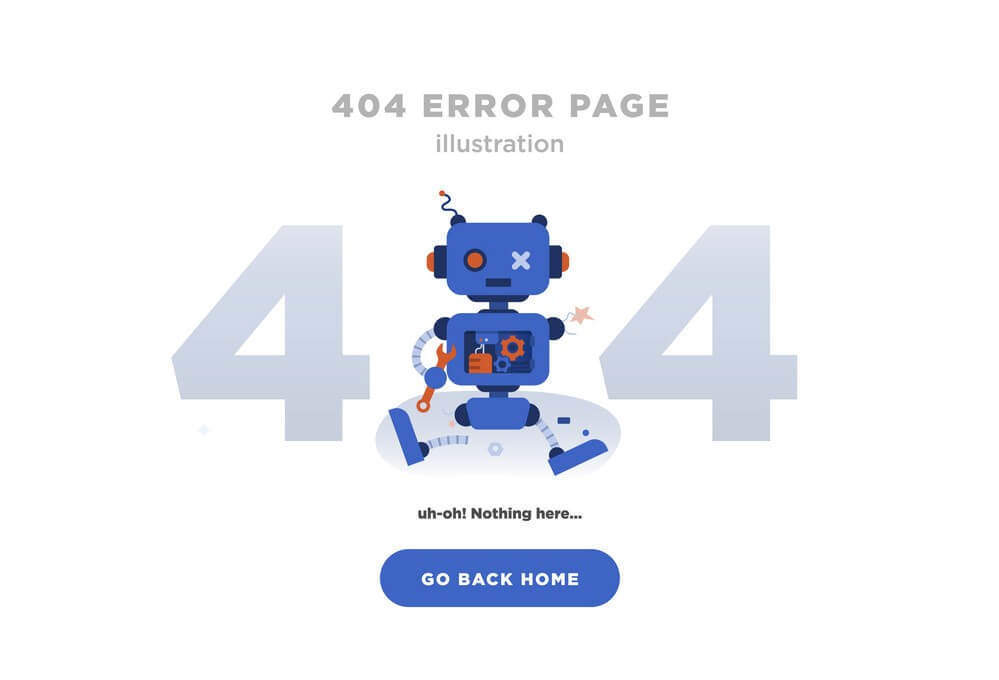
Situations like this can be very bad for your business. It can negatively influence your revenue, and SEO metrics in a way that increases the bounce rate and fails to push the user down the funnel.
Fixing broken links should be a must, not a maybe. The good advantage is that it can be resolved easily. There are a few options in this situation. You can either delete the broken links, redirect the link to a page that has content and works or remake the nonexistent page that the link is currently pointing at.
Finding broken links can be very easy if you use Site Audit. You have separate charts for internal links and external links. You can view all the pages from a specific category and even get a few directions.
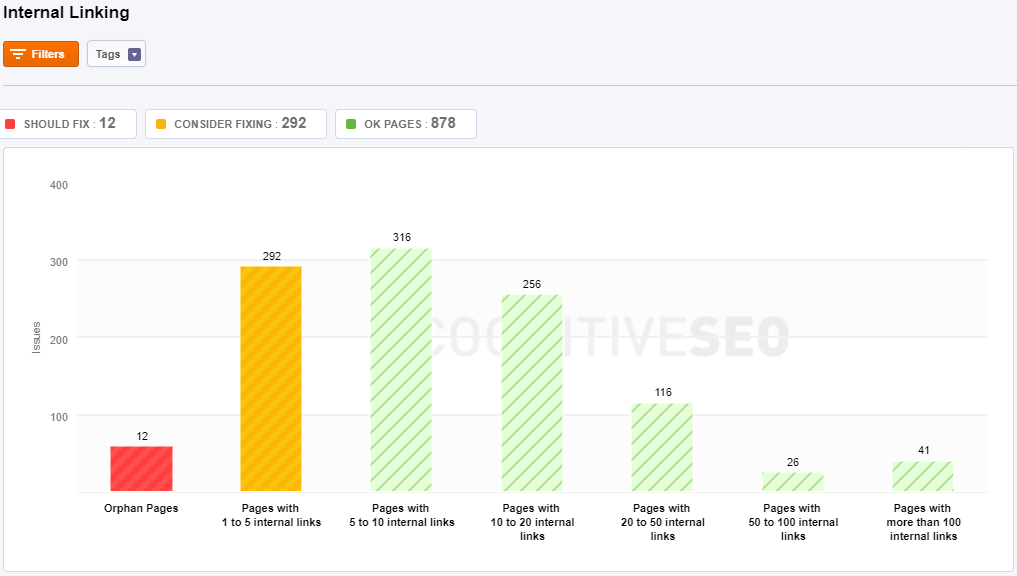
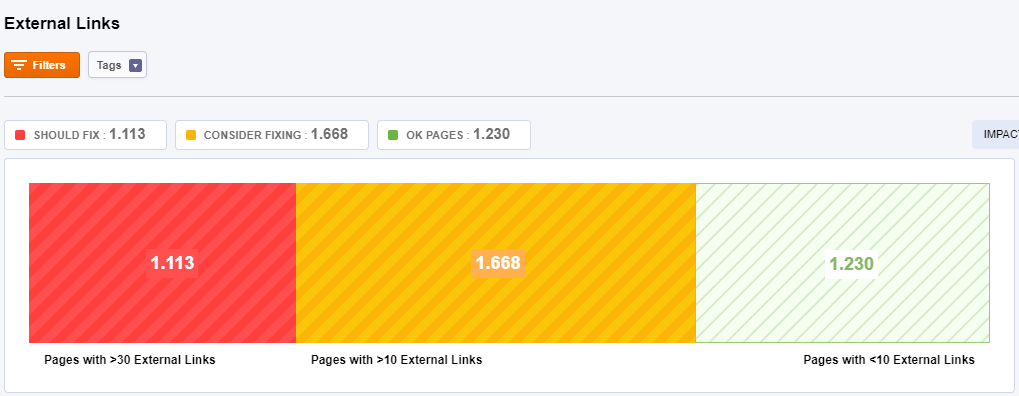
4.6 Improve Your Mobile and Desktop Performance
Your website performance is an important trigger for unoptimized SEO strategies. Website loading speed time is an important matter. That’s why Google has always recommended websmasters to create faster loading websites for all the devices. Site Audit allows to see all pages that have issues categoried as following:
- very slow
- slow
- fair loading
- fast
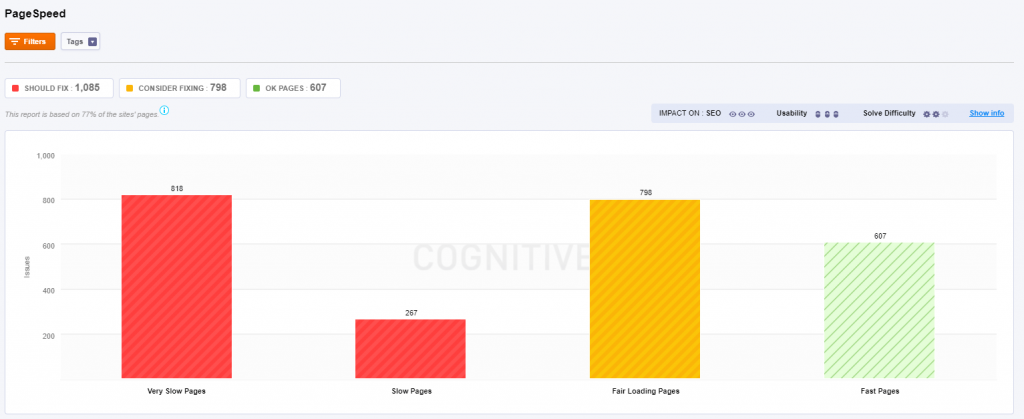
Mobile traffic has increased in time and Google saw the evolution of it. That’s why developers thought it important to have fast loading speed websites on mobile. In July 2018, Google said that page speed is a ranking factor for mobile searches.
More than that, Google developed the AMP (Accelerated Mobile Pages) project for any publisher to have pages load faster on mobile devices. The goal is to have better user experience, faster websites and a higher mobile performance. To achieve all of these, you need to setup the AMP. For a good implementation and clean setup, you can analyze the Site Audit section for Mobile issues.
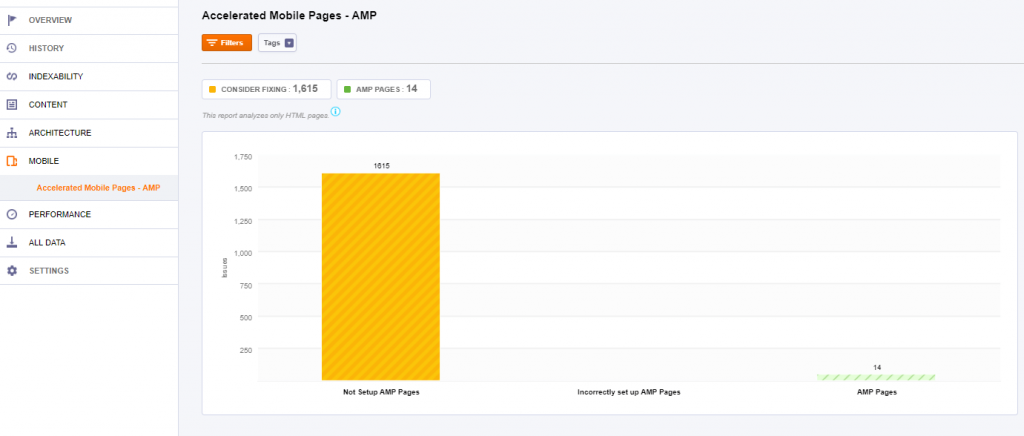
4.7 Try Link Earning
It might be the time to forget about link building and start earning links. The concept of link earning puts together all the qualitative efforts that a webmaster makes in order to gain organic links. These efforts don’t resume to outdated link building methods, such as link exchange, commenting on blog posts or submitting your site to low-quality web site directories. Link earning is about sharing your knowledge, generating original information and being active on social media. Creating engaging, helpful content that users want and need can be more useful than a pile of backlinks.
One shouldn’t create content just for the sake of an editorial calendar but one should offer something that its audience can benefit from, something that people would genuinely want to click on.
Conclusion
What we wanted to underline is that unoptimized SEO shouldn’t mean a lack of interest in optimization in general. Just a focus switch from off page to onpage and a more “back to the basics” approach.
Is Google militating for an unoptimized SEO concept? We cannot know that for sure but we do know that Google keeps on reminding us every time it has the opportunity that content is the one we should focus on. Good content has always been a necessity. And 2018 was the year of content, and lots of SEO experts and brand focused more on this on-site technique. The unoptimized SEO might be a new direction in your digital marketing strategy.
The measure of intelligence is the ability to change, so if the new SEO implies unoptimization, webmasters will have no other choice but to up their game and go along with the new rules.
SEO should be full of meaning but shapeless, just like water!
When you pour water into a cup, it becomes the cup. When you pour water in a bottle, it becomes the bottle. When you pour water into a teapot, it becomes the teapot. The water properties itself are unchanged but the shapes it takes in order to fit several recipients are always different.
So, what do you think? Is unoptimized SEO the way to go from now on?
The post SEO vs. Over Optimization – Does Unoptimized SEO Win the Battle? appeared first on SEO Blog | cognitiveSEO Blog on SEO Tactics & Strategies.
SEO vs. Over Optimization – Does Unoptimized SEO Win the Battle? posted first on http://nickpontemarketing.tumblr.com/
No comments:
Post a Comment